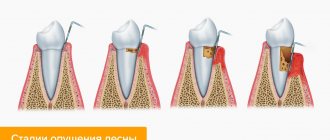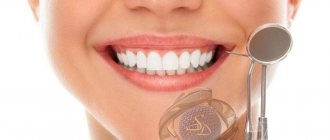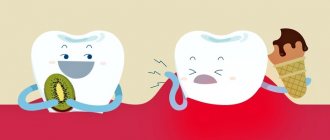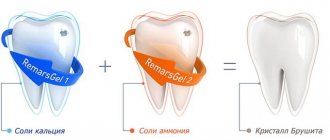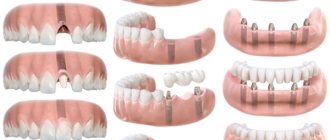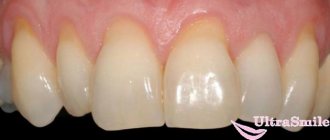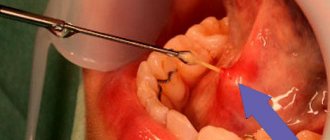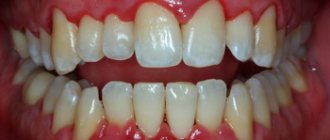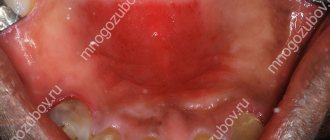If the neck of a tooth is exposed (also called a wedge-shaped defect or recession), you should contact a qualified dentist. In the absence of proper treatment, not only the development of caries and oral diseases can occur, but also the destruction of enamel, increased tooth sensitivity, and inflammation of the gums. At an advanced stage of the problem, the likelihood of exposure of the roots increases, and a person may lose a tooth.
Advantages of treatment of exposed tooth neck at the Academy Dent clinic
During various procedures, Dr. Sadov’s clinic uses modern anesthetic methods. The problem of each patient is carefully studied, qualified doctors prescribe step-by-step treatment, which will use innovative technologies and medications.
Medical instruments are cleaned and sterilized using an autoclave. It is also mandatory to carry out azopyram (checks whether blood remains on the instrument) and phenolphthalein (checks whether alkaline components remain on the instrument) tests.
The clinic’s specialists have extensive experience and regularly attend seminars and conferences to improve their skills (at least 4-6 times every 12 months). Using the latest therapeutic and surgical techniques, doctors prevent tooth decay and reduce the risk of bone and soft tissue diseases.
Why do the necks of the teeth become exposed?
Exposure of the neck of the tooth, the causes and treatment of which are closely related, can cause the patient to have:
- Atrophic gingivitis. Inflammation and swelling of the gums occurs, bleeding occurs, as a result of which the volume of tissue decreases and the neck of the teeth is exposed.
- Periodontitis. In the space between the teeth, the accumulation of pathogenic microorganisms, plaque, and the formation of tartar begins. Next, the soft tissue and ligaments that support the tooth are destroyed. There is a gradual resorption of bone tissue and subsidence of the gums, as a result of which the part of the tooth that should be under the gum is exposed.
- Caries of the cervical zone. When a tooth is damaged by caries, bacteria begin to multiply in the upper part of the crown and the gum tissue is destroyed.
- Improper oral hygiene. Carrying out poor hygiene measures or too intense movements with a toothbrush can cause microtrauma to the gums, the proliferation of bacteria, which results in the development of gum disease, and then the neck of the tooth is exposed.
- Anatomical features of the bite. With crowded teeth, short frenulum or small vestibule of the oral cavity.
- Age-related changes in tissue. This occurs mainly in older people.
- Bruxism. Grinding of teeth and clenching them tightly leads to exposure of the cervix.
- Diseases of the gastrointestinal tract. The altered acidity of saliva, which in most cases is present in gastrointestinal diseases, destroys the enamel. In addition, bacteria begin to multiply in the mouth, pathological processes occur in the soft tissues, as a result of which the neck becomes bare.
Considering the reason why the neck of the tooth is exposed, the disease develops at different rates and different consequences arise.
Symptoms
When the dental neck becomes exposed, it is visible to the naked eye. Especially if the problem concerns the front teeth. The hidden part of the tooth differs from the enamel in yellow. In addition to these signs, you can suspect that the cervix is exposed based on the following symptoms:
- Spicy, sour, cold and hot foods cause pain in all teeth at once.
- Brushing your teeth is an unpleasant experience.
- The gums become swollen, swollen, and inflamed.
- When passing along the gingival margin, the presence of unevenness (steps) is felt.
- The fragility of teeth increases.
- The roots are affected by caries.
- Visual elongation of the tooth, as the edge of the gum has shifted. Visually, it seems that the gap between the teeth has increased.
- The inflammatory process causes the appearance of a periodontal pocket in which pus will accumulate.
- The appearance of a putrid odor in their mouth.
- A weakened tooth is not securely fixed in the gum, increasing the risk of tooth loss.
Potential Complications
Recession of gingival tissue is an independent disease that requires competent therapy. If left untreated, it can lead to much more serious consequences than a violation of the aesthetics of a smile.
First, food gets clogged into the gaps between the teeth, causing bad breath. Next, inflammation develops, which can be accompanied by severe pain, discharge of pus and loosening of the teeth.
Increased sensitivity and soreness develop in the area of the gum margin, which makes eating difficult.
Teeth and roots are affected by caries. In advanced cases, lack of treatment can lead to the loss of one or several dental units at once.
The easiest way to notice when the gums on the front teeth recede, what to do in this case is well known - sign up for a consultation with dentistry to choose a treatment method.
The neck of the tooth under the crown is exposed
Crowns must be replaced periodically; they cannot last for decades. A properly made crown extends a short distance under the gum (from 0.5 to 1 millimeter). This seals the tooth, so that nothing from the oral cavity gets under the crown onto the tooth.
Over time, the gum atrophies, that is, it begins to slide off the crown. When the intensity of this process increases, when the gum is exposed by approximately 1-2 millimeters, the tooth is exposed. It begins to get affected by various infections contained in the oral cavity. This is the cause of the development of various diseases, caries, which provoke exposure of the neck of the tooth.
If the tooth under the crown is alive, the person complains of an irritable reaction when eating hot or cold. As the inflammatory process develops, severe aching pain begins to bother you. In such a situation, it is possible to save the tooth root. To do this, remove the crown. There are also treatment methods in which there is no need to remove it. More detailed advice can be obtained from the clinic doctor.
Characteristic symptoms and signs of the disease
You must be extremely careful, since this disease is almost impossible to notice with the naked eye: it seems that the dental tissue is simply lengthening somewhat, and the gums are becoming a little smaller.
The main sign indicating exposure of the neck of the tooth is a characteristic yellow area between the crown of the tooth and the soft gum tissue.
In addition, the patient usually experiences:
- swelling and bleeding of the gums;
- the occurrence of acute pain when pressing on a tooth or when eating;
- significant increase in dental spaces;
- The tooth becomes very sensitive when eating hot, cold, or sweet foods.
The neck of the tooth is exposed, how to treat it
After the doctor has diagnosed the cause of the exposed cervix, he recommends the patient one of the following treatment methods:
- Filling the exposed area. This procedure is indicated at the initial stage of the pathological process. When a wedge-shaped defect has formed, there is nothing to attach the filling material to, so filling is irrelevant.
- Remineralization of enamel. A product containing calcium is used. The patient will not feel pain during the procedure. The process lasts about 10 minutes. A drug is applied to the affected tooth to help strengthen the enamel, protect the roots from exposure, and prevent tooth loss. In addition, the advantage of remineralization is the return of the enamel to its former shine. How many sessions a person needs is determined by the doctor.
- The enamel is coated with fluoride (fluoridation). Special varnishes or gels that contain fluoride are used. Fluoridation can be simple or deep. With the help of such methods, the dental neck is restored and tooth sensitivity is reduced. With deep fluoridation, the drug strengthens the enamel as it penetrates inside it.
- Installation of veneers. This is a thin ceramic plate. It is applied to a previously ground tooth. This technique is indicated for advanced cases. With the help of veneers, it is possible to completely eliminate the disease and minimize the risk of its recurrence.
- Crowns. Before installing crowns, the tooth is ground down. It is a radical way to protect the tooth root and prevent further progression of the pathology.
- Gum plastic surgery.
Drug and surgical treatment
If the cause of exposure of the neck of the tooth is a lesion or pathology of the mucous membrane, the patient is consulted by an implant surgeon. During the operation, tissue taken from the palate of the mouth is implanted under the tooth root. This helps to increase the volume of gum tissue and cover exposed areas of the tooth. At the end of the surgical intervention, sutures are placed on the gums. After this, the patient is scheduled to regularly visit the attending physician, who will monitor the healing process.
Use an antiseptic solution to rinse your mouth. You can eliminate swelling and redness of the gums with the help of medicinal gels. If pus is present, an antibacterial drug is prescribed. The choice of medication is made only by the attending physician; self-medication is prohibited.
Treatment at the dentist
If the pathological process has not yet covered a large area, treatment may be limited to:
- carrying out deep fluoridation;
- installing a filling on the root area;
- laser cleaning of areas affected by tartar;
- installation of dental crowns or veneers.
But most often, when patients come to the dental clinic, the disease has already reached the stage when only surgical treatment methods can help. Their goal: to close the exposed neck of the tooth and restore the natural contour of the gums.
Patchwork method
The most common treatment option that dentists and their patients appreciate for the short recovery period. It consists of transplanting a flap of tissue from the same gum or palate to the affected area. The disadvantages of the method include a feeling of discomfort in the area from which the tissue for transplantation was taken and a possible discrepancy in the color of the gum and the borrowed flap.
Tissue regeneration method
In this case, a membrane is introduced into the affected area, which stimulates the growth of the patient's own soft tissue. When the natural contour of the gum is restored, another operation is performed to remove the membrane. This method of gum reconstruction is very effective, but it frightens patients with the need for repeated surgical intervention.
Fortunately, technology does not stand still, and today more and more dental clinics can offer the implantation of a resorbable (absorbable) membrane. It does not require a second operation, making tissue regeneration an ideal treatment for gum recession.
100% discount on periodontist appointments!
Moscow
How to Avoid Gum Recession
In order not to expose the neck of the tooth, it is necessary to lead a healthy lifestyle, maintain proper nutrition, and carry out prophylaxis with a vitamin and mineral complex (with the doctor’s permission). In addition, regular dental care is recommended. This means not only hygiene, but also timely treatment.
If the neck of the tooth is exposed, you need to contact a qualified specialist at Dr. Sadov’s clinic, who will conduct an examination, prescribe an examination, on the basis of which a treatment plan will be drawn up. Self-medication is strictly prohibited. Use traditional methods only after consulting a doctor. Otherwise, the condition may only get worse.
What can be done to prevent and prevent the development of gum disease:
- Visit the dentist regularly so as not to miss the first signs of the disease, and if detected, determine the true causes of gum recession and carry out the prescribed treatment.
- Take proper care of your teeth at home.
- As prescribed by your doctor, do professional hygiene and remineralizing therapy to strengthen your teeth enamel. Read more about these procedures in the articles Why do you need professional dental hygiene and What causes tooth sensitivity and will remotherapy help me?
How can you solve the problem?
A layman will immediately name two obvious solutions:
- remove protruded tooth;
- file down its coronal part.
Removing a tooth without pain can only be justified by its severe destruction, and even accompanied by the patient’s complete reluctance to seriously engage in dental treatment.
Filing the crown does not seem rational either. After all, for this you will have to remove the nerve of the tooth, since it will have to be “shortened” by more than half, and then covered with an artificial crown. It is difficult to call the formed “formation” a full-fledged tooth. “Grinding” is not required only when the molar is slightly advanced, when you can limit yourself to grinding its cusps to the existing bite height.
The best option is orthodontic treatment, since it is the orthodontist who deals with problems of tooth displacement. Modern technologies make it possible to return a “failed” upper molar to its place.
Prevention
Simple measures will help prevent gum overgrowth. Dentists recommend brushing your teeth with a soft brush, using dental floss or interdental brushes. Using a rinse aid reduces the number of bacteria settling on the enamel. But all these measures will not help if there is plaque on the teeth. Therefore, professional teeth cleaning in dentistry is where the prevention of hyperplasia begins.
Author of the article Voznyuk Vladimir Aleksandrovich Maxillofacial surgeon-implantologist of the highest category
Work experience: 28 years.
How dangerous is the condition?
With severe exposure of the dental neck, a wedge-shaped defect develops. Then the units located in the atrophied zone take on a characteristic V-shape. Because of this, the appearance of the smile deteriorates. But the problem lies not only in the deterioration of aesthetics. As the pathology progresses, the likelihood of:
- Crown fracture. It becomes excessively long. Its size is naturally disproportionate. With severe chewing load, a crack may appear or a fracture may occur.
- Deformations and curvatures of the dentition. It is not always possible to restore its original appearance later. If this can be done, it will only be with the help of long-term orthodontic and orthopedic therapy.
- The appearance of cervical caries. This is always a very painful condition. Even a small spot leads to discomfort. To prevent the patient from experiencing pain during treatment, the doctor has to inject an anesthetic.
- Loosening and tooth loss. This is perhaps the most dangerous complication. This situation can only be corrected with the help of prosthetics. It is always expensive and difficult. In addition, if there is a choice between preserving a natural tooth and installing an artificial unit, preference should always be given to the former.
Dentists know of many cases where the tooth root was severely exposed, and then a bacterial infection soon followed. As a result, a fistula is formed, from which pus is constantly released. This condition is very dangerous. If the purulent process is not stopped in a timely manner, phlegmon, sepsis and other conditions that pose a threat to health and life may develop.
Did you know that all dental pathologies can be cured with aligners?
Star Smile company is a leading Russian manufacturer of aligners.
The design of each set of aligners for patients is based on accurate mathematical modeling of the physiology of patient tooth movement, taking into account the existing pathology. What does it mean? This means that your teeth will be put in place as quickly and comfortably as possible with the help of Star Smile aligners! Star Smile specialists work in more than 70 (!) cities of Russia. We can always advise you in your city for free. And the main thing is to cure it once and for all with the help of aligners!
Did you know that all dental pathologies can be cured with aligners?
I want to know more about the movement of teeth on aligners
A classification of this pathological process of tooth movement has been created:
- During the first stage,
the teeth move back and forth or, in medical terms, have vestibulo-orally directed mobility. - When, in addition to this, the teeth make movements in lateral directions, the second stage
. - At the most dangerous stage, the third stage
, vertical and circular movements are added to those mentioned earlier. The teeth are already beginning to emerge from the bone alveoli.
If the first two stages are subject to treatment and have a certain chance of recovery, then the last stage of mobility is a kind of sentence - the tooth should be removed.
